“Homelab” is a colloquial term to describe a home server (or entire datacenter, if you have the space) that hobbyists can play around with. I’d like to take this post to talk about the evolution of my Homelab. If you have spent any time on reddit.com/r/homelab, you will probably see people asking “what do you use this hardware for?” For everyone it is different.
I have played with technology since I was a kid, but it started to become more serious when I was in high school and working at a small IT support company. Around that time, I decided to start my own consumer-focused computer repair company to “compete” with Best Buy, etc.
Because I learned a lot through my job, I wanted to set up a file server just like we had at the IT support company so I could host all my common repair tools centrally. A customer had a old machine they were not using, and I was able to get a copy of windows server 2008 from high school for free with a promotion they were running to provide students with copies.
From there, Homelab continued to grow. I built a new machine where I could back up customers’ computers when I needed to format them, and also store family documents, games, movies etc.

From what I remember, at this point I had set up several machines (pictured below). One running Windows Server 2008 for mostly a file server, and an old Dell machine to be a firewall running Untangle. I believe the middle machine was running Windows 7 to be a media server that I would copy Blu-ray movies to, and also had a cable card in it to distribute live TV to other TV’s in the house with Windows Media Center.
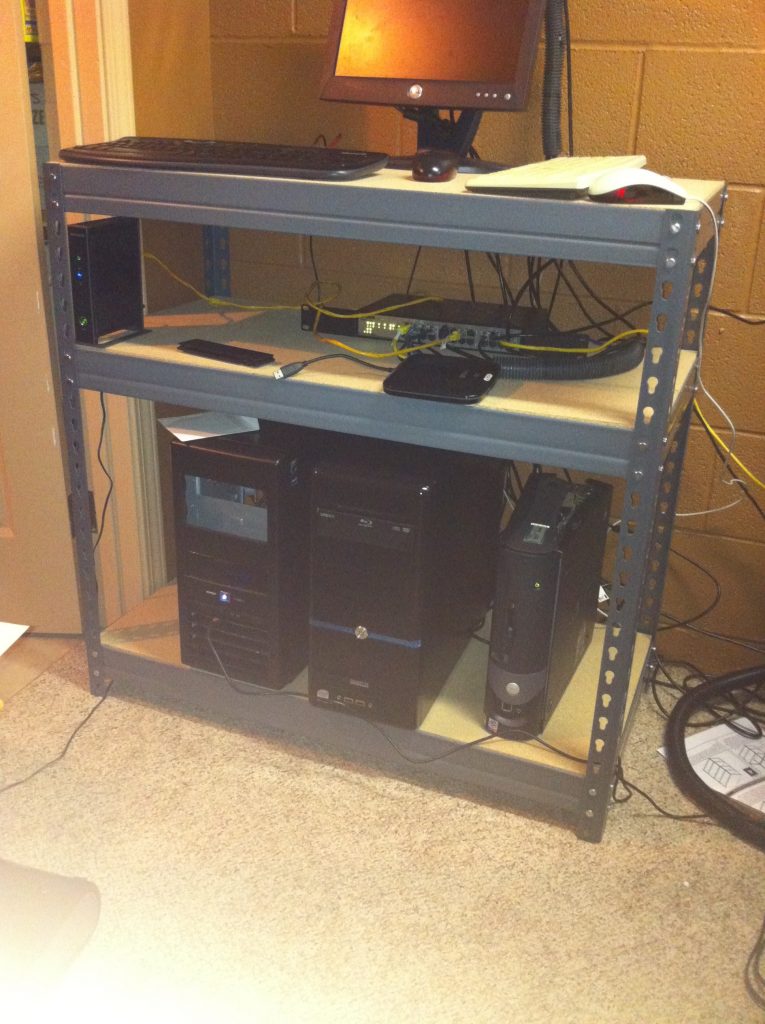
When it came time for college, Homelab moved with me to an apartment. I found out that my local Goodwill store sold computer hardware. And, at times, you could find old enterprise gear there. I started to accumulate hardware and this is where (from taking the CCNA and learning more in college, and my first internship) I could actually start to work on network equipment at a basic level. I ran OSX on a Mac mini server model, and pfsense on a Watch Guard firewall. I believe I ran the switches just for studying for CCNA at the time.
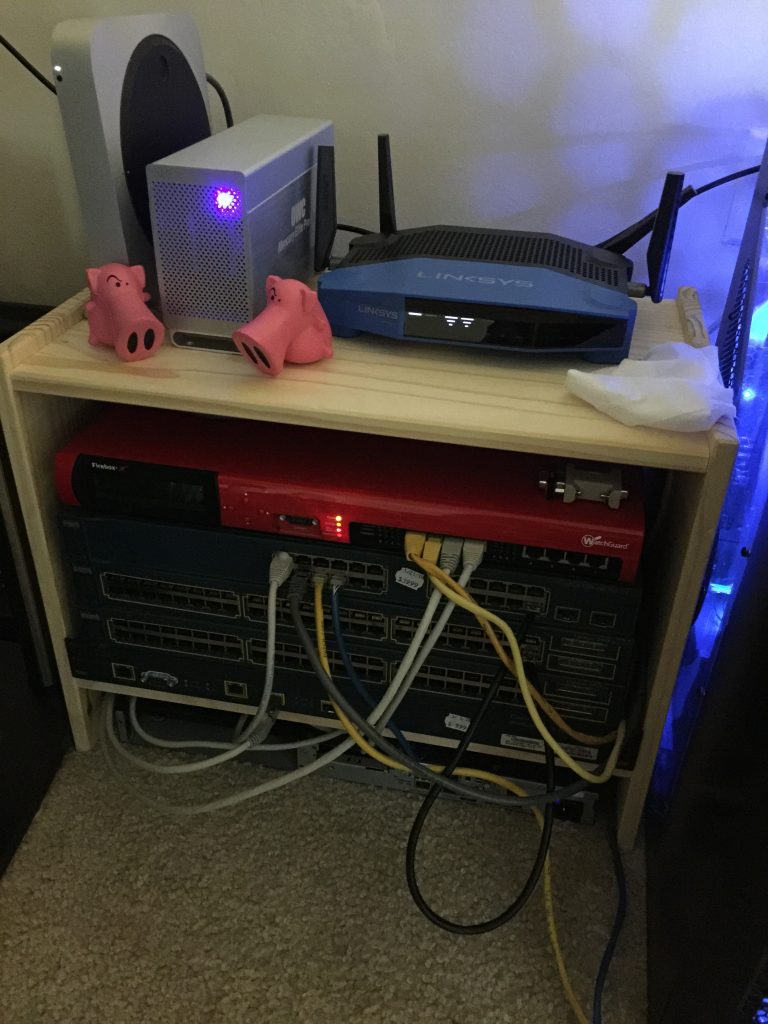
My second apartment in college was a little bigger, so I continued to grow this more:
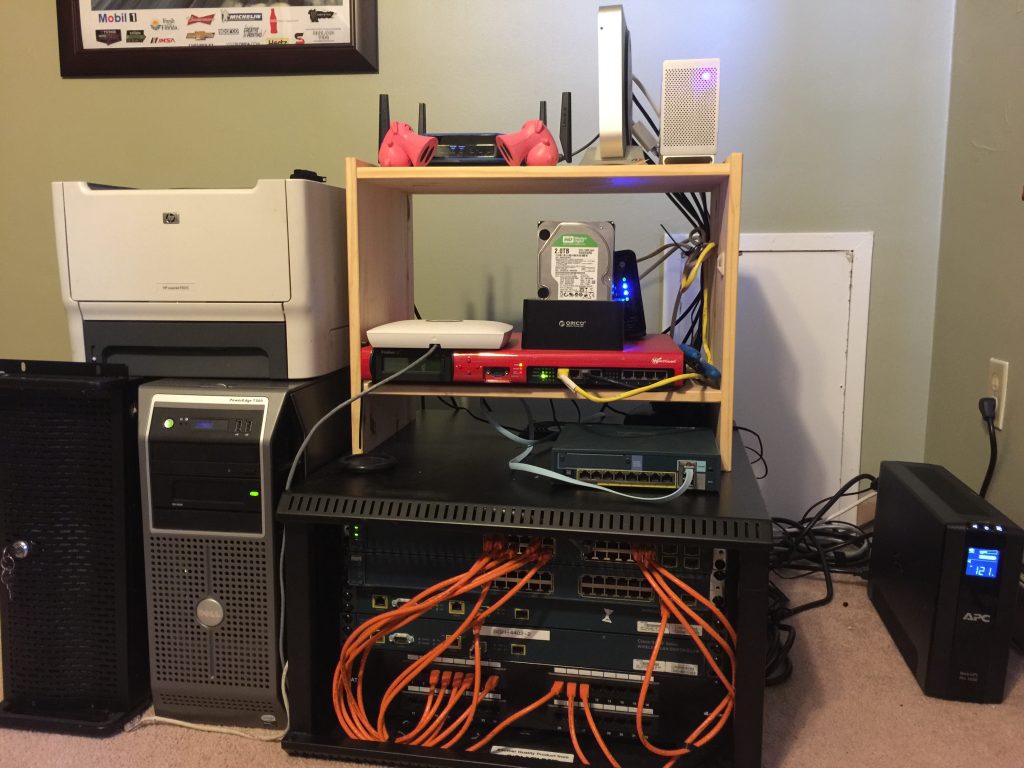
Fast forwarding to today – and what an upgrade! – this is my setup:
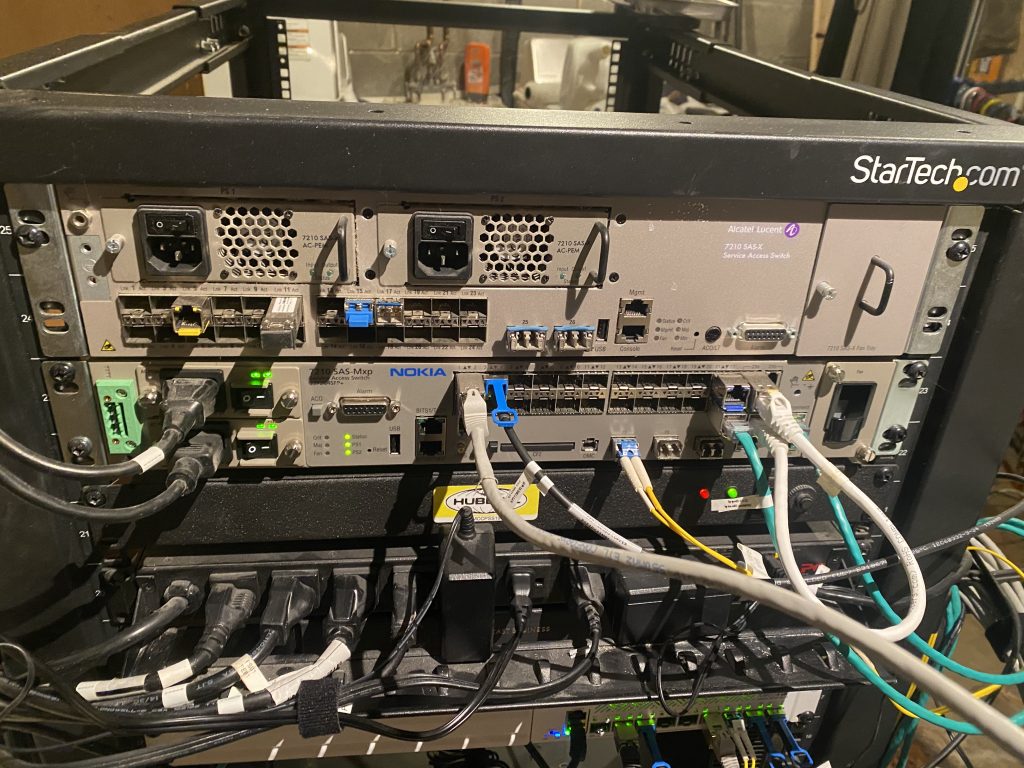
Nokia 7210 MXP. This serves as my main router. Many posts to come on this. The SAS-X is not used, just still in the rack 🙂
Some PDUs. The one is APC which is able to be controlled via a browser.
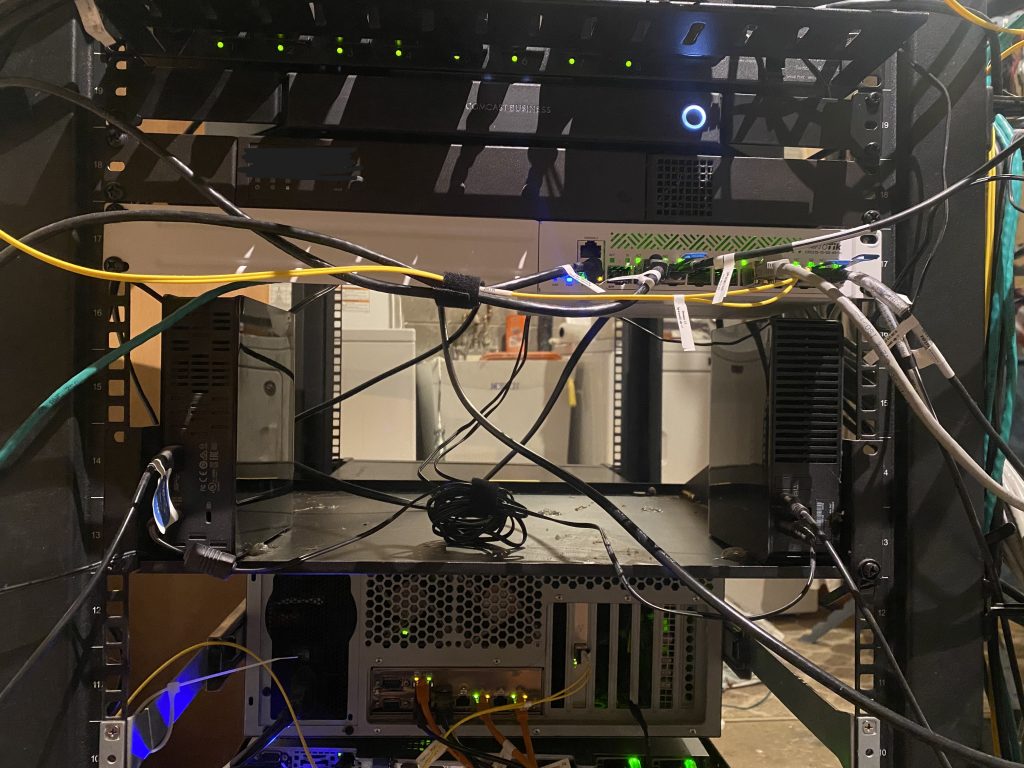
Next, a Comcast Modem, Mikrotik CRS310-1G-5S-4S+, which serves 10G connectivity to my two hypervisors and my Truenas disk storage for iSCSI traffic. Lastly, it has connectivity for my desktop PC at 2.5G.

Last of the networking equipment is my main switch, a Huawei S5300 that all my devices plug into. It has a funny origin story: this came from my local KMart when it closed. It has 4x10G ports, which independently serve as an uplink to the 7210 router, 10G connectivity for VMs hosted on the hypervisors, and 10G to the Mirkotik switch. It is POE and all my other devices within my home connect to it. In the next picture, when I purchased this home, one of my first projects was wiring cat6 everywhere (and now even to my shed).
The front of the rack of the compute/storage of the lab starts with the Rosewell RSV-L4500U that runs Truenas core. It has a mix of disks, which are 2x8TB and 4x10TB WD Red drives, and 6x1TB SSDs.
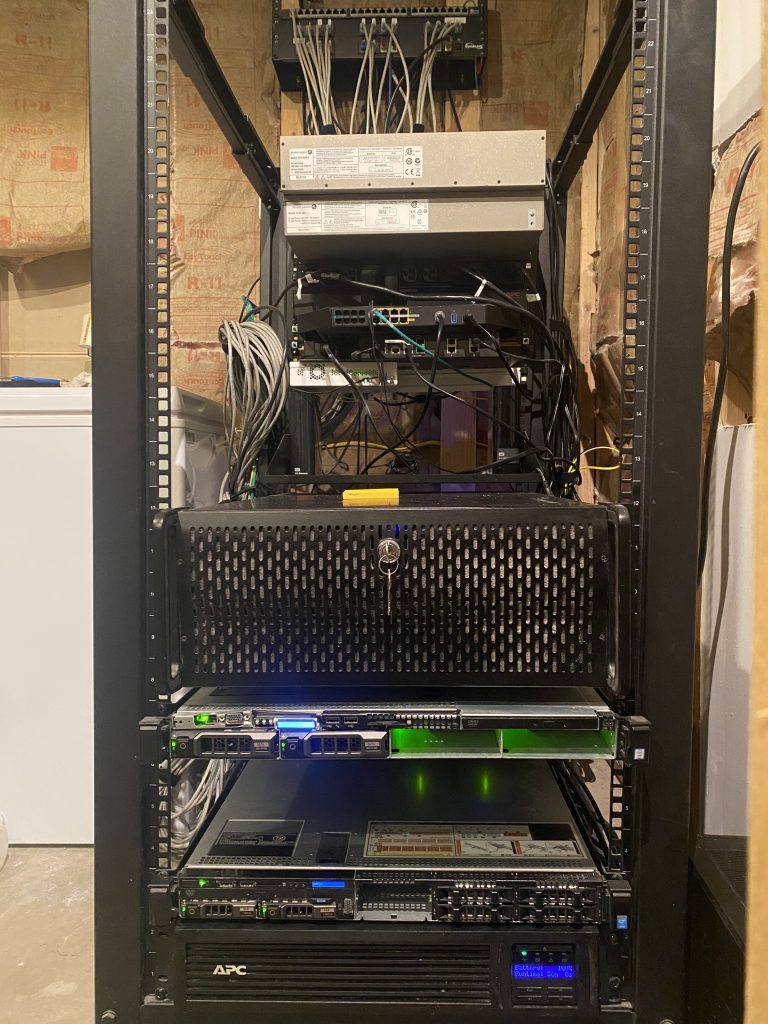
The HDDs are set up in a 3x mirrored VDEVs. The SSDs are also set up in their own mirrors. I use this as a very rudimentary tiered storage. My VMs that need performance, and are important, have their disks on one of the SSD pools, while the other VMs are running on the HDDs. Finally, any of my SMB shares also come from the HDD pool. It has a Intel Celron 64920 and 32GB of ECC ram.
Next is a Dell r330. It runs Proxmox, and just a few VMs that are critical + a GPU for encoding videos from my NVR. This has just a 8 core Xeon E3-1230 and 32gig of ram.
On to the next, is a Dell R630. This is my main server, and it has a pair of 12 core Xeon E5-2643v3 CPUs, and 128gig of RAM.
Lastly, is my main battery backup the APC UPS 1500, with a mgmt card. My VMs all use apcupsd, to learn the status of the battery, and I have auto shutdowns in place to theoretically shutdown all the hosts before the battery runs out.
I think everything has to start what it physically looks like! In my next post I plan to talk in depth about mostly routing, and the logical setup I use to segment my network.